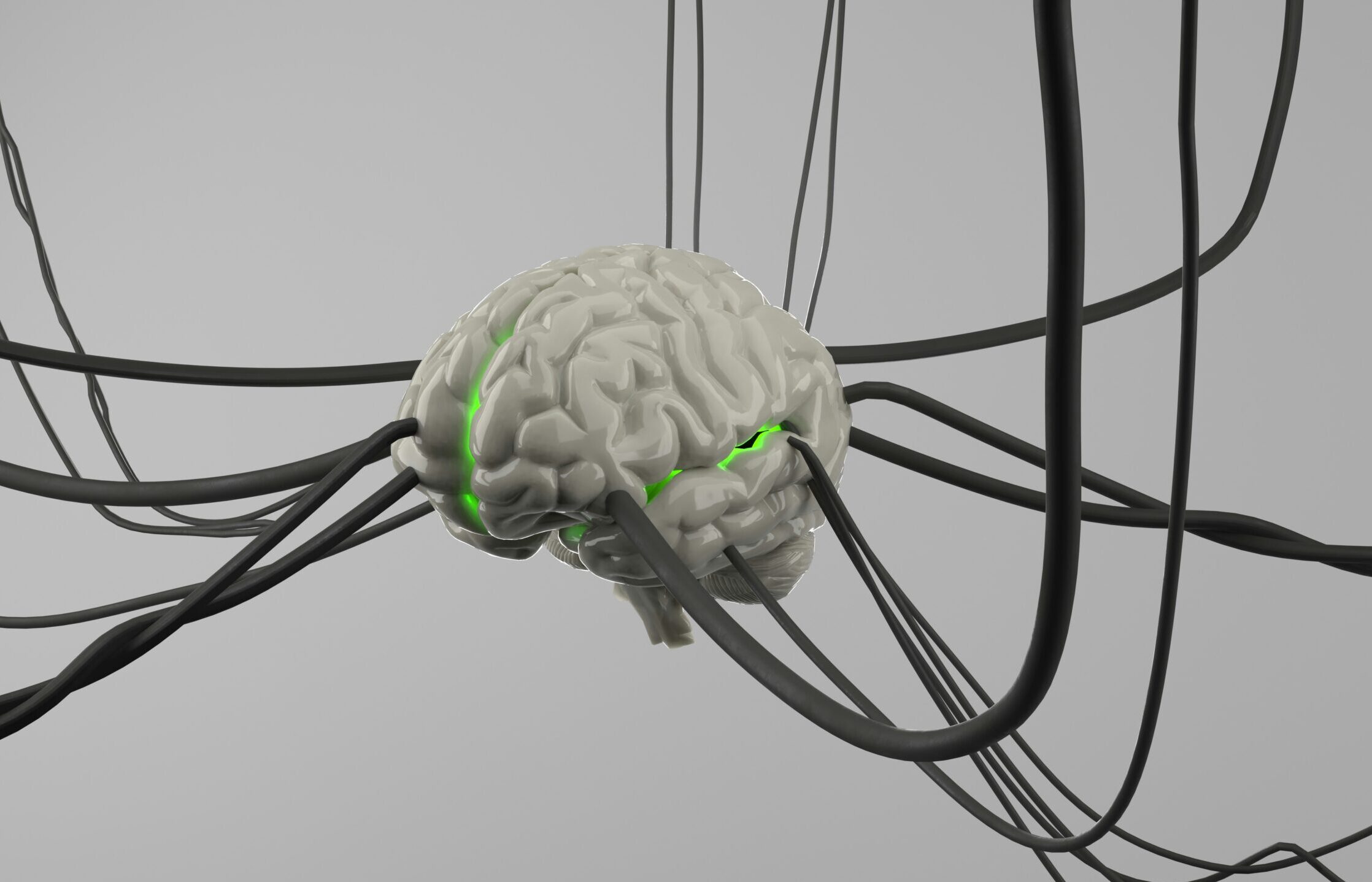The Golden Dome missile defence system was announced by U.S. President Donald Trump on May 20, 2025, as a comprehensive shield to protect the U.S. homeland from advanced missile threats. Initially referred to as an “Iron Dome for America” in a January 27, 2025, executive order, it was rebranded as the “Golden Dome” in February 2025 to reflect its ambitious scope, distinguishing it from Israel’s Iron Dome, which focuses on short-range threats.
The concept draws inspiration from Ronald Reagan’s Strategic Défense Initiative (SDI) of 1983, which aimed to create a space-based defence against nuclear missiles but was largely abandoned due to technological and cost challenges. The modern initiative builds on advancements since SDI, leveraging commercial space technologies and existing missile defence systems.
The groundwork for the Golden Dome was laid by Michael D. Griffin, former Deputy of Technology for SDI, who established the Space Development Agency (SDA) in 2017 to advance reusable launch vehicles and space-based technologies. The Heritage Foundation’s Project 2025 further promoted the idea, citing SpaceX’s Starlink as evidence that a proliferated satellite network is feasible.
The system responds to growing threats from adversaries like China and Russia, who have developed hypersonic glide vehicles (HGVs) and other advanced missiles, prompting a renewed focus on homeland defence. General Michael A. Guetlein of the U.S. Space Force was appointed to lead the initiative, with an initial $25 billion allocated in a 2025 budget bill, though total costs are estimated at $175 billion or more.
Key Features:
- Laser-based interception (vs. Iron Dome’s kinetic missiles)
- 360-degree protection against simultaneous threats
- AI-powered threat detection
- Lower operational cost per interception
Timeline
- 2007: Israeli Ministry of Defence selects Rafael to develop the system.
- 2011: Iron Dome becomes operational and intercepts its first rocket over Beersheba.
- 2012: Widely used during Operation Pillar of Defence, achieving an estimated 85% success rate.
- 2014: Plays a key role during Operation Protective Edge, intercepting thousands of rockets.
- 2021 & 2023: Continues to protect Israeli cities from intense rocket barrages.
How It Works
The Golden Dome is designed as a multi-layered, integrated defense system to detect, track, and neutralize missile threats across all phases of flight: boost, midcourse, glide, and terminal. Its key components include:
- Space-Based Layer: Thousands of satellites in low and medium Earth orbits form the Proliferated Warfighter Space Architecture (PWSA). These include Hypersonic and Ballistic Tracking Space Sensors (HBTSS) to detect and track dim HGVs, providing fire-control-quality data for intercepts. Space-based interceptors, such as kinetic missiles or directed-energy weapons (e.g., high-energy lasers), target missiles during boost or midcourse phases.
- Ground-Based Layer: Systems like the Ground-Based Midcourse Defense (GMD), Patriot Advanced Capability-3 (PAC-3), Terminal High Altitude Area Defense (THAAD), and Aegis Ballistic Missile Defense (BMD) provide terminal-phase interception. The MOSSAIC ground sensor network, developed by L3Harris, enhances space domain awareness.
- AI and Data Integration: Artificial intelligence processes sensor data to predict missile trajectories and coordinate intercepts. A robust data architecture, overseen by a Chief Data Officer, ensures real-time communication across platforms.
- Non-Kinetic Technologies: High-energy lasers and high-power microwaves complement kinetic interceptors, offering cost-effective and precise defense options.
- Multi-Domain Operations: The system integrates air, sea, ground, and cyber domains, using platforms like the F-35 and naval warships to enhance flexibility.
so how it works mainly
A. System Components
- High-Energy Laser (HEL) Emitter
- Fiber-optic laser with 100+ kW power (scalable to 300 kW)
- Range: 7–10 km
- AI-Powered Radar (ELM-2084)
- Detects threats in <2 seconds
- Tracks 1,000+ objects simultaneously
- Command & Control (C2) Center
- Prioritizes threats using machine learning
- Mirror Targeting System
- Adjusts beam trajectory 500x/sec for moving targets
B. Interception Process
- Detection: Radar identifies incoming projectile.
- Tracking: AI calculates speed, trajectory, and impact point.
- Engagement: Laser beam focuses on threat for 2–4 seconds.
- Destruction: Heat causes warhead detonation/midair breakup.
Interception Cost:
| System | Cost per Interception |
|---|---|
| Iron Dome (Tamir missile) | $50,000 |
| Golden Dome (Laser) | $2,000 |
The system operates by detecting missiles via advanced radar and satellite sensors, tracking their paths with AI-driven algorithms, and deploying interceptors to neutralize threats. Unlike Israel’s Iron Dome, which covers a small area, the Golden Dome must protect a landmass 1,000 times larger, requiring global satellite coverage and rapid orbits to address the “absenteeism” problem, where interceptors may not be ideally positioned.
Impact on the Future
The Golden Dome could significantly alter U.S. defense strategy and global security dynamics:
- Enhanced Deterrence: By countering advanced missile threats, it may deter adversaries, reducing the likelihood of attacks on the U.S. homeland. However, critics argue it could prompt adversaries to build more missiles to overwhelm the system, potentially escalating arms races.
- Space Militarization: Deploying thousands of space-based interceptors could accelerate the militarization of space, raising concerns about space debris and international stability. China and Russia have condemned the program, citing risks to global strategic balance.
- Technological Advancements: The project drives innovation in AI, sensor technology, reusable launch vehicles, and directed-energy weapons, benefiting both military and commercial sectors.
- Economic Implications: Estimated costs of $175–$542 billion could strain defense budgets, potentially diverting funds from other priorities. However, it may stimulate the aerospace industry, with companies like Lockheed Martin, SpaceX, and L3Harris playing key roles.
- International Cooperation: Allies like Canada have expressed interest in participating, potentially strengthening alliances but also creating dependencies on U.S. technology. A revived missile defense dialogue could enhance global security collaboration.
Critics, including experts like Laura Grego from the Union of Concerned Scientists, argue that an impenetrable shield is unachievable and may provoke adversaries to proliferate weapons, as building offensive missiles is often cheaper than defensive systems. Supporters, however, see it as a necessary response to evolving threats, with potential to reshape deterrence strategies.
Technical Limitations
| Challenge | Status |
|---|---|
| Beam Diffusion | Solved via phased-array lasers |
| Energy Supply | Mobile nuclear reactors in testing |
| Cloud Interference | Partial solution (80% efficacy in rain) |
Related Research
Ongoing and proposed research areas critical to the Golden Dome include:
- Hypersonic Tracking Sensors: The HBTSS program develops sensors to track HGVs, integrating with the PWSA to provide fire-control-quality data. Research focuses on improving sensitivity and data accuracy.
- AI and Data Architecture: Studies explore low-latency networks and AI algorithms for real-time threat assessment and interceptor coordination. The role of a Chief Data Officer highlights the need for advanced data management.
- Directed-Energy Weapons: Research into high-energy lasers and microwaves aims to enhance non-kinetic defense capabilities, offering scalable and cost-effective interception.
- Reusable Launch Vehicles: Advances in cost-effective, reusable rockets (e.g., SpaceX’s Starship) are critical for deploying large satellite constellations economically.
- Space Domain Awareness: Programs like MOSSAIC and Discriminating Space Sensor (DSS) focus on improving sensor networks to distinguish real threats from decoys and debris.
- System Integration: The Missile Defense Agency (MDA) is researching ways to coordinate multiple agencies and contractors, building on lessons from past systems like SDI and Iron Dome.
- Geopolitical and Ethical Studies: Research into the implications of space militarization, including arms race dynamics and space debris management, is essential to assess long-term impacts.
Comparison with Other Systems
| System | Country | Range | Interception Method | Cost/Shot |
|---|---|---|---|---|
| Golden Dome | Israel | 10 km | Laser | $2,000 |
| Iron Dome | Israel | 70 km | Kinetic missile | $50,000 |
| THAAD | USA | 200 km | Kinetic hit-to-kill | $10M |
| S-500 | Russia | 600 km | Missile + radar | $15M |
Countries with Missile Defence Systems Similar to the Golden Dome
The Golden Dome is a proposed U.S. missile defence system designed to counter ballistic, hypersonic, and cruise missiles using a multi-layered architecture, including space-based sensors and interceptors. It is unique in its ambition to protect the entire U.S. mainland, drawing inspiration from Israel’s Iron Dome but scaled up significantly. Below is an overview of countries with comparable missile defence systems, based on their ability to intercept various missile types, including ballistic missiles, and their use of advanced sensors and interceptors. Note that no country currently has a system as comprehensive as the proposed Golden Dome, which emphasizes space-based interceptors and a nationwide scope.
Countries with Advanced Missile Defense Systems
According to available information, the following countries have developed or deployed missile defence systems capable of intercepting ballistic or other advanced missiles, though none match the exact scope of the Golden Dome:
- United States:
- Systems: The U.S. operates multiple missile defense systems, including Ground-Based Midcourse Defense (GMD), Aegis Ballistic Missile Defense (BMD), Terminal High Altitude Area Defense (THAAD), and Patriot Advanced Capability-3 (PAC-3). These systems are integrated with advanced radars like the Long Range Discrimination Radar (LRDR) and Space-Based Infrared System (SBIRS). The Golden Dome aims to build on these, adding a space-based interceptor layer and Hypersonic and Ballistic Tracking Space Sensors (HBTSS).
- Scope: GMD targets intercontinental ballistic missiles (ICBMs), while THAAD and PAC-3 handle shorter-range threats. Aegis BMD operates on naval platforms. The Golden Dome’s proposed architecture would unify these into a broader, space-centric system.
- Status: The Golden Dome is in the planning phase, with $25 billion allocated in 2025 and an estimated total cost of $175–$542 billion. It is not yet operational but aims to be by 2029.
2. Israel:
- Systems: Israel’s multi-layered defense includes Iron Dome (short-range rockets), David’s Sling (medium-range missiles), and Arrow 2/3 (ballistic missiles). The Arrow system, developed with U.S. support, is particularly relevant, using hypersonic interceptors and the “Green Pine” radar to counter ballistic threats.
- Scope: Covers Israel’s small territory (21,937 sq km) effectively, with a 90%+ interception rate for Iron Dome against rockets. Arrow targets longer-range ballistic missiles.
- Note: Some sources incorrectly refer to an Israeli “Golden Dome,” likely a misnomer for Iron Dome or Arrow. No evidence supports an Israeli system named Golden Dome.
3.Russia:
- Systems: Russia’s S-300PMU2, S-400, and the developing S-550 systems have anti-ballistic missile (ABM) capabilities. The A-135/A-235 system protects Moscow against ICBMs, using nuclear-tipped interceptors.
- Scope: Primarily regional, with S-400 capable of intercepting short-range ballistic missiles (SRBMs). The S-550 is rumored to have advanced capabilities against hypersonic threats, though details are sparse.
- Status: Operational, with ongoing upgrades to counter modern threats like hypersonic missiles.
4.China:
- Systems: China’s HQ-9 and HQ-19 systems offer ABM capabilities. The HQ-19 is designed for exoatmospheric interception, tested successfully in 2010, 2013, and 2017. China also conducted an anti-satellite test in 2007, indicating space-based defense potential.
- Scope: Focused on regional defense, with HQ-19 targeting ballistic missiles. China’s systems are less comprehensive than the U.S.’s but are advancing rapidly.
- Status: Operational, with HQ-19 still under development to rival Russia’s S-400 or the U.S.’s THAAD.
5. India:
- Systems: India’s Ballistic Missile Defence (BMD) Program, launched in 1999, includes the Prithvi Air Defence (PAD) for high-altitude interception and Advanced Air Defence (AAD) for lower altitudes. It targets missiles with ranges up to 2,000 km.
- Scope: Designed to protect major cities, with tests conducted since 2006. India became the fourth country to develop an ABM system after the U.S., Russia, and Israel.
- Status: Partially operational, with ongoing development for broader coverage.
6. Iran:
- Systems: Iran’s Bavar-373, unveiled in 2016 and upgraded in 2022, is a long-range surface-to-air missile system claimed to rival Russia’s S-300 and S-400. It is designed to counter ballistic missiles and fifth-generation aircraft.
- Scope: Regional defense, with mobile truck-mounted launchers. Its effectiveness against advanced threats is unproven in combat.
- Status: Operational since 2019, with limited deployment.
7. France, Italy, United Kingdom:
- Systems: These countries participate in NATO’s missile defense framework, which includes Aegis Ashore sites (e.g., in Romania and Poland) and the UK’s Type 45 destroyers with limited ABM capabilities. France and Italy co-developed the SAMP/T system, effective against SRBMs.
- Scope: Regional, primarily integrated into NATO’s defense architecture. Less comprehensive than U.S. or Russian systems.
- Status: Operational, with reliance on U.S. technology for broader coverage.
8. South Korea and Japan:
- Systems: South Korea operates THAAD and Patriot systems, while Japan uses Aegis BMD and PAC-3. Both countries collaborate with the U.S. under bilateral defense agreements.
- Scope: Regional defense against North Korean threats. Japan’s Aegis-equipped ships can intercept ballistic missiles, and South Korea’s THAAD deployment enhances high-altitude interception.
- Status: Operational, with plans for further integration into U.S.-led systems like the Golden Dome.
Total Countries: At least nine countries (United States, Israel, Russia, China, India, Iran, France, Italy, UK) have missile defense systems with ABM capabilities, though their scope, scale, and effectiveness vary. South Korea and Japan also deploy U.S.-provided systems, bringing the total to 11 if included. No country currently has a system as expansive as the proposed Golden Dome, which emphasizes space-based interceptors and nationwide coverage.
some Other Countries
- Türkiye: Türkiye’s “Steel Dome” is a proposed air defense system, but it is not yet operational and focuses on regional threats, not comparable to the Golden Dome’s scope.
- Ukraine: Ukraine has expressed interest in systems like Iron Dome but lacks an indigenous ABM system. It relies on Western aid for air defense.
- European Sky Shield Initiative: Launched in 2022 by 24 European countries, this initiative integrates U.S. Patriot and Israeli Arrow systems but is not a standalone national system.
Impact on the Future of War and Defence Systems
The Golden Dome and similar missile defense systems are poised to reshape warfare and defense strategies in profound ways, with both positive and destabilizing effects:
- Enhanced Deterrence:
- Impact: Systems like the Golden Dome aim to deter adversaries by reducing the effectiveness of their missile arsenals. By intercepting ballistic, hypersonic, and cruise missiles, they make attacks less viable, particularly for rogue states like North Korea or Iran. The U.S. seeks to “change the calculus” of adversaries, making it cost-prohibitive to launch high-value missiles.
- Future Implications: Stronger deterrence could reduce the likelihood of missile-based conflicts, but adversaries may shift to asymmetric tactics (e.g., cyberattacks, drones) to bypass defenses.
2. Space Militarization:
- Impact: The Golden Dome’s reliance on space-based sensors and interceptors (e.g., HBTSS, PWSA) accelerates the weaponization of space. Critics warn this could lead to an arms race, with countries like Russia and China developing anti-satellite weapons or orbital warheads to counter U.S. systems.
- Future Implications: Space could become a new battlefield, increasing the risk of conflicts over satellite networks. This may prompt international treaties to regulate space-based weapons, though current tensions (e.g., China’s opposition) make this challenging.
3. Proliferation of Offensive Weapons:
- Impact: Missile defenses can paradoxically encourage adversaries to build more missiles to overwhelm systems, as it is often cheaper to produce offensive weapons than defensive ones. Russia’s nuclear-powered cruise missiles and China’s hypersonic stockpiles (projected at 4,000 by 2035) are examples of countermeasures.
- Future Implications: This could lead to a new arms race, increasing global instability. The U.S. may need to pursue arms control talks, as seen in Reagan’s SDI era, to mitigate escalation.
4.Technological Innovation:
- Impact: The Golden Dome drives advancements in AI, sensor technology, directed-energy weapons (e.g., lasers), and reusable launch vehicles. Companies like SpaceX, Lockheed Martin, and L3Harris are poised to benefit, with innovations like Starlink’s satellite network enabling scalable architectures.
- Future Implications: These technologies could spill over into civilian sectors (e.g., satellite communications, AI-driven logistics), but they also raise the technological bar for other nations, potentially widening the gap between major powers and smaller states.
5. International Alliances and Dependencies:
- Impact: The Golden Dome fosters cooperation with allies like Canada, which is negotiating participation through NORAD, and potentially Japan and South Korea. However, allies may become reliant on U.S. technology, raising concerns about strategic autonomy, especially in Europe’s Sky Shield initiative.
- Future Implications: Stronger alliances could enhance collective defense, but dependence on U.S. systems may strain relations with countries like France, which prioritize independent defense industries.
6. Economic and Resource Challenges:
- Impact: The Golden Dome’s estimated cost of $175–$542 billion could strain U.S. defense budgets, diverting funds from other priorities. Critics highlight the U.S.’s rising debt and manufacturing challenges as barriers.
- Future Implications: High costs may force prioritization of certain threats (e.g., hypersonic missiles over drones) or phased implementation, as seen in Israel’s incremental approach. Economic pressures could also limit global adoption of similar systems.
7. Shift in Warfare Dynamics:
- Impact: Missile defences shift interception points earlier in the threat trajectory (e.g., boost phase), reducing risks to civilian populations. However, systems like the Golden Dome are not 100% effective, as seen with Iron Dome’s limitations against missile swarms.
- Future Implications: Warfare may increasingly involve multi-domain operations (land, sea, air, space, cyber), with AI and non-kinetic weapons (lasers, microwaves) playing larger roles. Adversaries may focus on overwhelming defences with low-cost drones or cyberattacks.
Currently, at least nine countries (U.S., Israel, Russia, China, India, Iran, France, Italy, UK) have missile defence systems with anti-ballistic capabilities, with South Korea and Japan also deploying U.S.-provided systems. The Golden Dome, if realized, would be unmatched in its scope due to its space-based focus and nationwide coverage. Its development could enhance deterrence and drive technological innovation but risks escalating space militarization, arms proliferation, and geopolitical tensions. The future of warfare will likely see increased reliance on multi-domain, AI-driven systems, with missile defences pushing adversaries toward asymmetric strategies. Continued arms control efforts and international cooperation will be critical to managing these risks.
For Further Reading :
1. Missile Defense: The First Sixty Years – Lt. Col. Roy Houchin
📌 Focus: Historical evolution of missile defense systems, including early satellite-based concepts.
🔗 Amazon US: https://www.amazon.com/Missile-Defense-First-Sixty-Years/dp/0275983473
2. The Physics of Space Security – David Wright & Laura Grego
📌 Focus: Technical aspects of space-based missile defense, including lasers and kinetic interceptors.
🔗 Amazon US: https://www.amazon.com/Physics-Space-Security-David-Wright/dp/0674030204
3. Star Wars: Reagan’s Strategic Defense Initiative – Frances FitzGerald
📌 Focus: The political and technological history of SDI (the original “space shield” program).
🔗 Amazon US: https://www.amazon.com/Star-Wars-Reagans-Strategic-Initiative/dp/0374523583
4. Space Warfare and Defense: A Historical Encyclopedia – Bert Chapman
📌 Focus: Covers space-based missile defense systems, past and present.
🔗 Amazon US: https://www.amazon.com/Space-Warfare-Defense-Historical-Encyclopedia/dp/1598840065
5. The Future of War: A History – Lawrence Freedman
📌 Focus: Discusses emerging missile defense technologies, including space lasers.
🔗 Amazon US: https://www.amazon.com/Future-War-History-Lawrence-Freedman/dp/161039785X
6. Directed-Energy Weapons: The Next Military Revolution? – John Alexander
📌 Focus: Laser and particle-beam weapons for missile defense (including space applications).
🔗 Amazon US: https://www.amazon.com/Directed-Energy-Weapons-Next-Military-Revolution/dp/1616148912
7. The U.S. Nuclear Arsenal: A History of Weapons and Delivery Systems – Norman Polmar
📌 Focus: Includes sections on missile defense satellites (e.g., SBIRS, Space Fence).
🔗 Amazon US: https://www.amazon.com/U-S-Nuclear-Arsenal-History-Delivery/dp/1682475036
8. Space Power and Politics – Eligar Sadeh
📌 Focus: Geopolitical aspects of space-based missile defense.
🔗 Amazon US: https://www.amazon.com/Space-Power-Politics-Eligar-Sadeh/dp/0415770225
9. The Weapon Wizards: How Israel Became a High-Tech Military Superpower – Yaakov Katz & Amir Bohbot
📌 Focus: Covers Israel’s missile defense systems (Iron Dome, Arrow, Golden Dome).
🔗 Amazon US: https://www.amazon.com/Weapon-Wizards-Israel-High-Tech-Military/dp/1250088089
10. The Next Space Age: The Future of Missile Defense and Space Warfare – Various Authors (RAND Report)
📌 Focus: Future satellite-based missile defense concepts.
🔗 Free PDF (RAND): https://www.rand.org/pubs/research_reports/RRA2371-1.html















